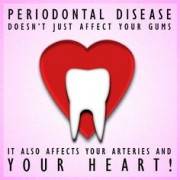What Not Brushing Before Bed Does to Your Teeth

You wonder: why is it so hard to remember brushing before bed? We’ve probably all been in this scenario before, but it’s time to face reality: not brushing your teeth before bed is one of the poorest decisions you can make when it comes to proper dental hygiene.
Is brushing before bed not for you?
Let’s break down what actually happens when you don’t brush your teeth before bed. When you eat, food causes the bacteria that’s already in your mouth to multiply in overdrive, especially if there’s a high sugar content. Bacteria love sugar! So you’ve got all of this bacterial waste in your mouth and then you start to feel a layer of plaque accumulate on your teeth. Plaque has to be physically removed from your teeth by brushing or it becomes tartar and causes a world of problems, including gum disease and cavities.
Think of just how funky your mouth can seem when you wake up in the morning. If you skip your nighttime teeth brushing session, that means you’re going roughly twice the amount of time in between brushes that you should be – which means more than twice the germs. Pretty gross, right?
Commit to a nightly routine
The American Dental Association advises that everyone should brush at least twice a day for two minutes a session and floss once a day. Spending those two minutes brushing your teeth twice a day removes plaque and, if you use fluoridated products, strengthens and revitalizes your teeth. In addition, you should still be sure to see your dentist regularly to screen for any potential dental issues before they become serious.
Make sure brushing is a part of your standard bedtime routine. It’s so easy to form bad habits and what seems like an occasional miss when it comes to nighttime brushing can easily turn into a regular thing if left unchecked. If it seems like this is something you struggle with regularly, think of ways to make it easier for yourself. Can you brush your teeth right after dinner? Can you keep a toothbrush by your bed so you at least do a dry brush? Maybe you can even try out a toothpaste that feels like more of a splurge than your usual pick, so you’ll be more inclined to use it.
The bottom line is that brushing your teeth cannot be replaced by mouthwash, chewing gum, or mints, and not brushing before bed can have negative long-term effects on your dental health. Commit to those two minutes twice a day, and rest easy knowing your teeth are healthy and protected.





